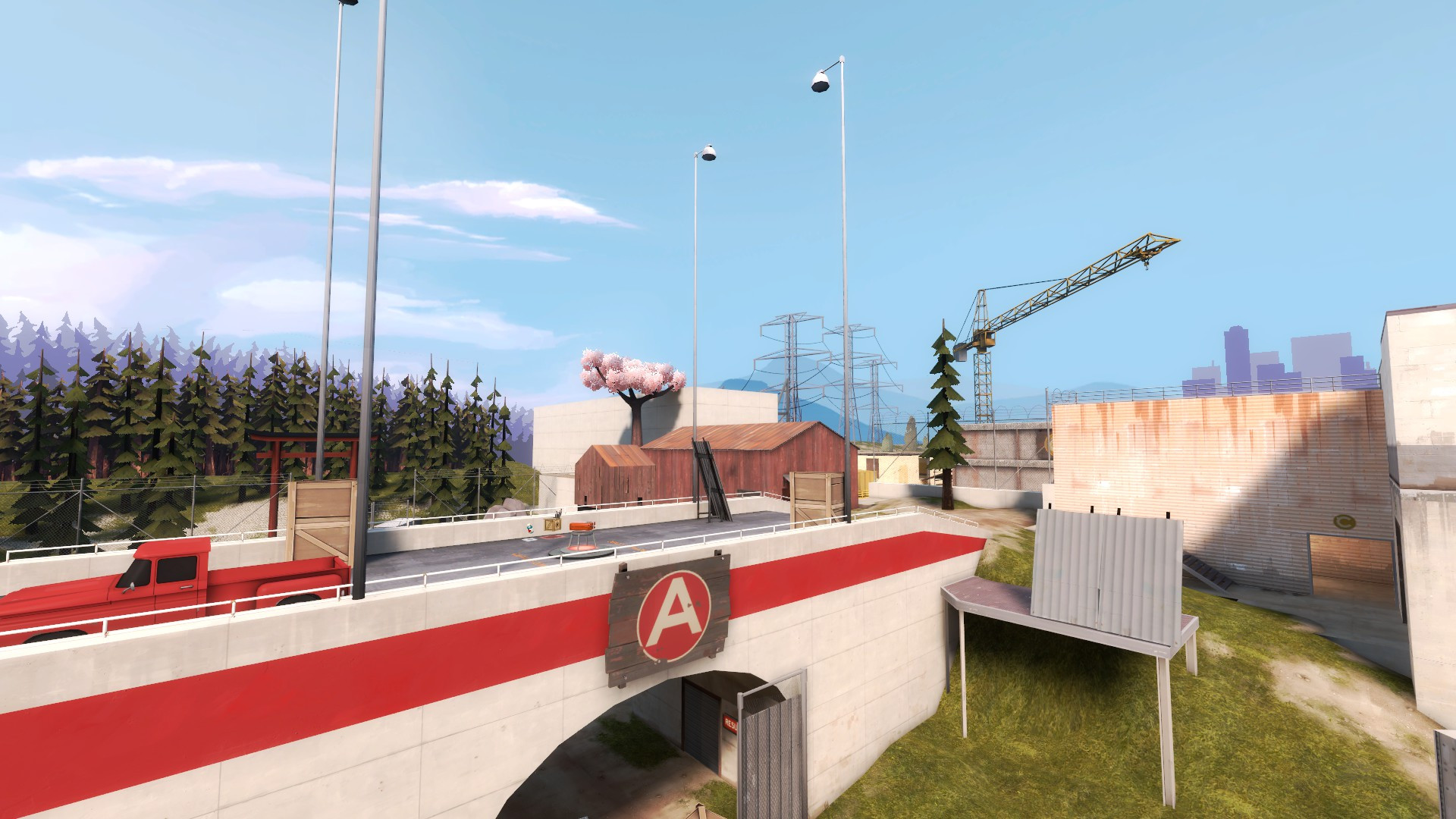Revision 3 is here!
This update celebrates one year of 4Tokyo development. Below I will continue my thoughts in further detail. Fundamental changes include:
1. Teams switch sides at the start of new rounds (counter-clockwise on the scoreboard / map: RED -> BLU -> GRN -> YLW)
Using our beloved fridge metaphor, I was hungry to play on different teams and experience their unique layouts. I also wondered about map balance when skilled players could skew perception of a territory’s balance. Now at the start of each round, you will play on a predictable new side of the map while retaining your team’s score. (Implementation not ideal, but it’s functional)
2. Flags captured respawn in 30 seconds.
For gameplay, 4Tokyo broke the CTF stalemate stereotype; matches were too fast to enjoy often lasting under 5 minutes. To slow the game down under default rules (playing to 3), the intelligence waits 30 seconds to respawn after being captured. This helps a defense recover flag room control and nerfs chain capping.
3. Team respawn times begin at 4 seconds, increasing by 3 for every flag capture (max of 10, the default).
To help losing teams stay competitive, winning teams have a slightly longer respawn time per capture. This is similar to KOTH with teams in control of the point having longer respawn times and the other having shorter ones. Respawn times on average are shorter however, since previous versions were a default 10 seconds. This also serves as an experiment shortening respawn times.
4. A 12 minute round timer now exists, the game enters sudden death if no team reaches capture limit.
This is not what I envisioned. I envisioned teams with the most captures at the end of the time limit to win by having the most points, if there were a tie, the game enters sudden death. Due to the complexity/risk of manually coding this, I opted for a simpler solution. Thankfully, I have yet to see games reach the time limit even when playing to 5, so this shouldn’t be an issue for now. Sudden death also means any team, regardless of score, will win with one intel capture.
You can read the rest of the smaller changes in the
patch notes. The rest of this post will be me writing about the map’s reception and future. The good people from TF2C provided me with both playtesting and a spot on their official custom maps server. This helps immensely where bots can only do so much, and I’m grateful. It shows we may take for granted TF2Maps providing a community and playtesting servers.
That said, official servers are treated as a place to play, not a testbed. Players were less receptive to a map in temporary textures rather than one artpassed. They did not seem so interested in its process, a map to be shaped just for them. I can understand that, mapping has always been a thankless task. Not to mention, I must be one in a dozen of other WIP maps to them.
The feedback has been wonderful however, and I’ve made all the changes today from these players. I chose to lightly artpass areas I am more confident in rather than haphazardly detailing everything and lock myself into a form. For example, I artpassed a GRN base style guide, but did not use it because I am still experimenting with its layout.
Going forward, I see 4 team as an alternative mode for a semi-casual audience. I believe 4Tokyo’s main strength comes in its scarcity: there are few 4 team maps to choose from, less that aren’t derivative. Even fewer asymmetrical ones, which I personally enjoy. Furthermore, I can’t name any video game outside the Team Fortress series with 4 teams, and even they felt like an afterthought.
In conclusion for today’s update, I’ve read about certain Rainbow Six Siege maps being reworked precisely because their strategies have turned stale or figured out, like a puzzle. Leaving a sense of mystery to the map per update may not be a bad thing, and let players learn the map themselves.






